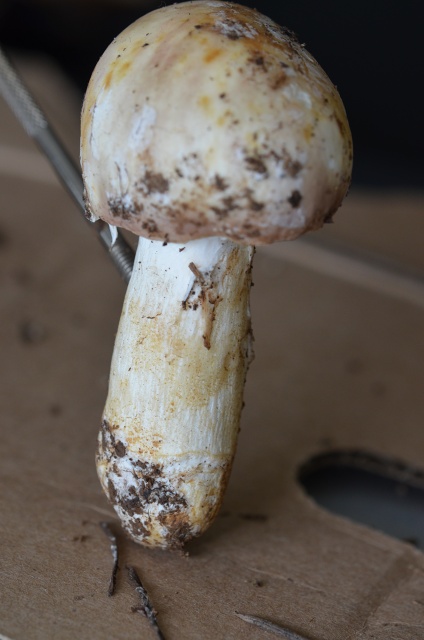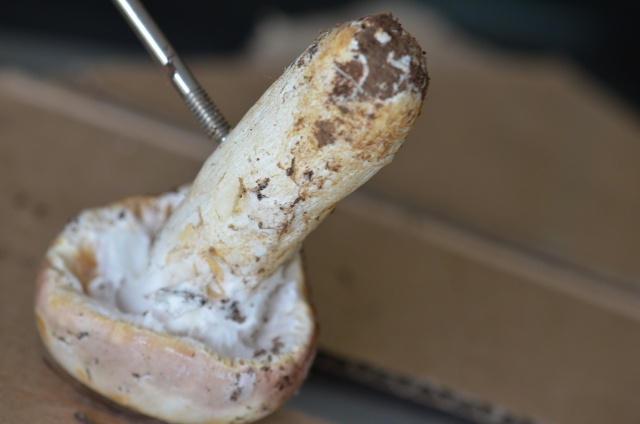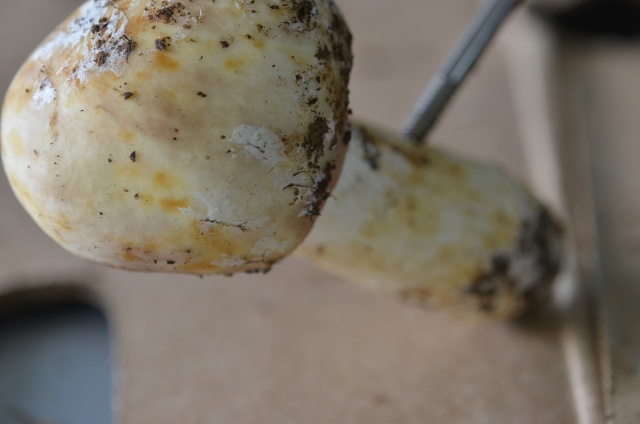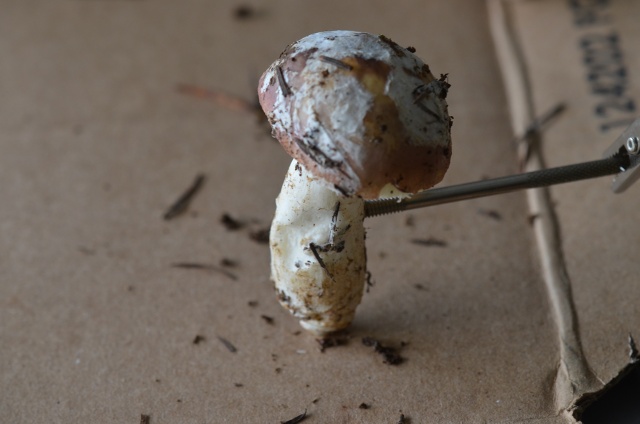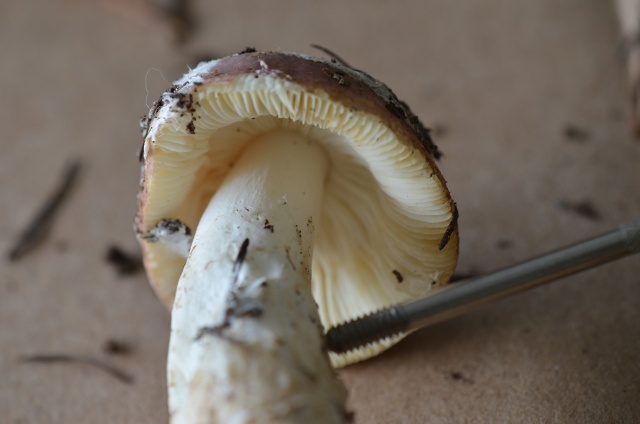Judy said: These photos are of a Russula that has parasitic
Hypomyces attaching it. Russulas are firm, but when broken are chalk-like,
not fibrous. That"veil" material is some of the Hypomyces,
not the thicker veil of a matsutake.
A question to Judy: You indicate that that mushroom has "parasitic Hypomyces".
Is that the parasite that makes a Lobster mushroom.
Aren't the Russula that become Lobsters the Russula brevipes.
Judy said: Yes, Hypomyces is a parasite, and good if it is on R. brevipes and is red.
There are other Hypomyces, and this mushroom pictured by you is covered by some other one,
but this is the "infant" or imperfect stage.
The red one on brevipes is the "perfect" or totally fertile state as
an ascomycete with regular overwintering stage spores.
The imperfect state has a spore stage too, but not the overwintering stage,
but more of a type of mold.
It is hard to explain, but both ascomycetes and basidiomycetes are the
"perfect" state, and form what we call fruiting bodies that we collect.
They also have a previous stage called an "imperfect" state that looks more
like a mold. The spores produced there are very transcient and have
only half the complement of genetic material and a single nucleus.
The perfect state, like the ones we collect, generally have the full complement of
genetic material in each spore with 2 nuclei.
Hypomyces lactofluorum makes the lobster mushroom, and the host is always Russula brevipes.
Each Hypomyces has a specific host. They cover the gills and keep them from
completing their formation and from producing spores of their own.
The Hypomyces wins this game.
Some other Russulas and Lactarius as well, have another Hypomyces,
called H. luteovirens, Amanita has H. lateritius,
on Boletus is H. chrysospermium, and there are others on other genera as well.
These listed are the most common. Not all are edible, but H. lactofluorum happens to be edible.
